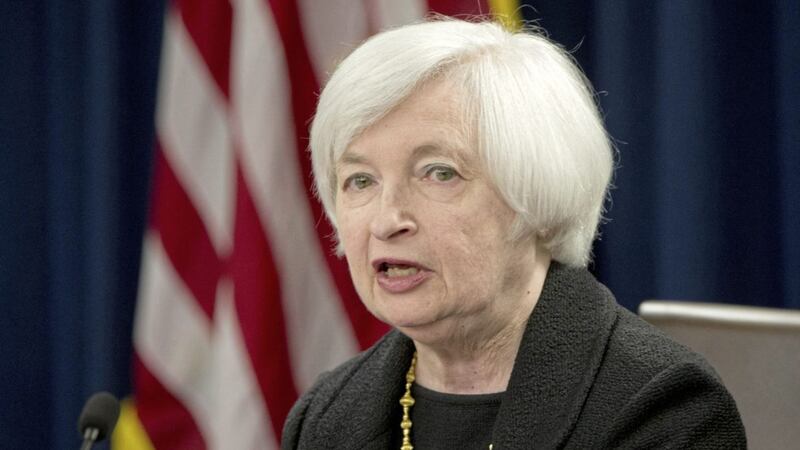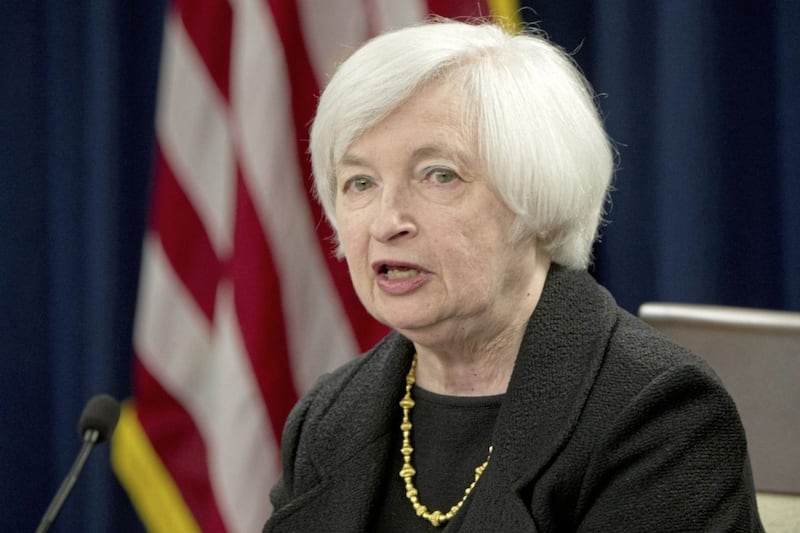FINANCIAL markets have been paying very close attention to, and displaying sensitivity over recent weeks towards news flow regarding the direction of global monetary policy.
Risk appetite has come under pressure, while the main currency pairs have experienced some volatility as a raft of comments from the main central banks indicated that the era of ultra-loose monetary policy may be coming to an end.
This very accommodative monetary policy stance, which has included exceptionally low interest rates as well as asset purchases, has provided a very supportive backdrop for asset prices.
As a result, any headlines/comments suggesting a more hawkish shift in the stance of global monetary policy has tended to see bond markets sell off, while equity markets have also suffered some downside.
This sensitivity was on display again last week, though this time markets took some solace from the news flow. During her semi-annual testimony to Congress, Fed chair Janet Yellen struck a generally cautious/less hawkish tone.
She reiterated her view that the evolution of the economy will warrant only “gradual increases in the federal funds rate” and that the “longer-run neutral level of the federal funds rate is likely to remain below levels that prevailed in previous decades”.
She also commented that there remains “considerable uncertainty” about “when and how much inflation will respond to tightening” and that the Fed is “watching inflation very carefully”. Equity markets made gains, while bond yields fell modestly following her remarks.
No surprise then, that this week’s ECB policy setting meeting is likely to be front and centre of market attention. Indeed, recent updates from the ECB have been a key factor behind the heightened focus on the outlook for global monetary policy.
At the Central Banking Forum in Portugal a fortnight ago, President Mario Draghi stated that “deflationary forces have been replaced by reflationary ones” and that the Central Bank could “look through” temporary factors weighing on inflation.
Subsequent to this, the release of the ‘account’ of their June meeting, where they removed their easing bias in relation to interest rates, also showed that the Governing Council discussed the possibility of also removing their easing bias in relation to quantitative easing.
So, while no changes to interest rates are expected, a key focus of this week’s meeting will be whether the ECB removes its guidance that it stands “ready to increase our asset purchase programme in terms of size and/or duration”.
However, while the ECB is probably laying the ground work for QE tapering next year, rate increases are not likely to come on the agenda until late 2018/early 2019. This rate tightening cycle is likely to be very modest in pace.
The outlook for monetary policy will also be under consideration in the UK, with June CPI data due for release. Recent BoE comments have noted that price pressures have become more of a concern for the Bank, with its “tolerance” for above target inflation “reduced”.
Such concerns prompted three of the eight voters at the last MPC meeting to support an immediate rate increase. CPI inflation is forecast to have remained at 2.9 per cent in June, above the MPC’s expectations of 2.7 per cent (May Inflation Report). Core inflation (ex-food & energy) is also expected to remain steady, at 2.6 per cent.
Last week’s earnings data showed that while inflation rises, wage growth is slowing. The dampening impact of this was evident in retail sales in Q1 (-1.6 per cent). However, the data have seen some improvement recently. Sales are anticipated to edge up in June, though negative real earnings will remain a headwind in the coming months.
In the US, we get housing market updates. Housing starts are forecast to rise in June, following three consecutive months of decline. The timelier NAHB homebuilders sentiment index is expected to remain strong in July. Likewise, the July NY and Philly Fed indices are anticipated to remaining at overall encouraging levels.







